TOTAL SOLAR ECLIPSE
Baja, Mexico (San Juan De La Costa, Sea of Cortez)
Photo Atlas/Observations
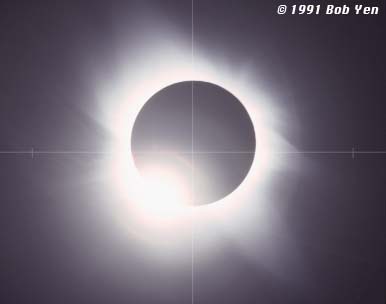
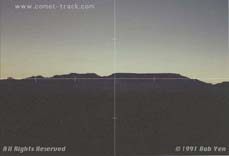 |
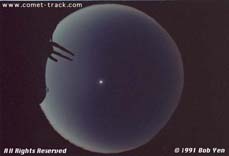 |
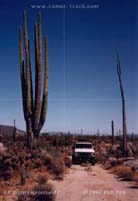 |
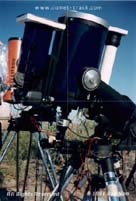 |
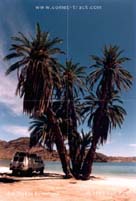 |

 |
 |
 |
 |
 |
My solo 4x4 expedition to see the '91 solar eclipse (my 1st ever) ranks as one of the best experiences of my life. I had a chance to experience one of the great spectacles of nature, and at the same time do some solo Baja off-road exploration. What an adventure!
At RTMC in May '91, I had run into people going to the eclipse (Jeff Charles of Versacorp, Carter Roberts, John Sanford, Bob Mortimer), and only then decided to give it a go. My biggest obstacle was prepping my 4x4 van, whose engine needed new cylinder heads. I even got my racing friend to loan me 2 50 gallon gas drums (due to rumors of possible gas shortages on the way back, for the long 1000 mile drive from the southern tip of Baja. This turned out to be all a bunch of hype).
The drive down Baja was amazing, the incredible unspoiled beauty. As I approached La Paz, I noticed some thin clouds & pulled over to study their movement. I decided it was best to go north a bit (off the centerline), which corresponded to clearer skies (as it turned out I got 5.75 min of totality, less than the 7 min max). I entered a rugged area with arroyos draining into the Sea of Cortez, and found the perfect site: a sand dune off the beach with a giant Saguaro cactus at the top. Just offshore is Espiritu Santu, an island popular with kayakers.
The notable aspect of my eclipse experience, was that of being out by myself (no crowds, no problems). Truly a mesmerizing experience.
 Click for HI-RES image |
This is 3rd contact diamond ring -- a very long exposure (5 sec) for outer corona. Taken with a 4" f10 (1000mm FL) SCT on Kodachrome 64. |
 Click for HI-RES image |
This is just past 1st contact. Note the sunspot & filament. This is just past 1st contact. Note the sunspot & filament. |
 Click for HI-RES image |
This is a 50mm (35mm format) horizon shot, looking towards the west. You can see the brightening on the western horizon, since the umbra is moving towards the east. |
 Click for HI-RES image |
This is sunrise day after the eclipse, from my site (elevated sand dune near the beach). Ironically, there was quite a bit of clouds.. |
 Click for HI-RES image |
This is the renowned Giant Boojum cactus forest near Catavina. The Baja 1000 racers know it well. That Saguaro cactus is HUGE (dwarfing my van), almost 50 ft tall! |